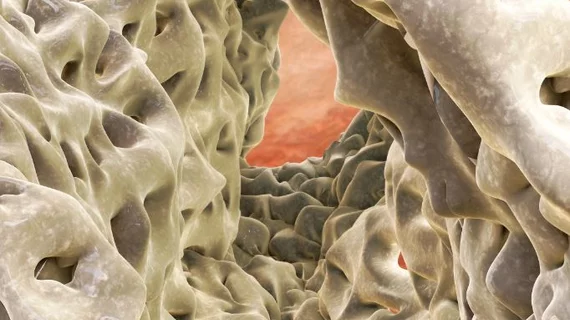New quantitative 3D imaging method could improve arthritis, joint care
As the population continues to age, joint diseases will likely multiply, but according to recent research in Scientific Reports, a new three-dimensional (3D) imaging technique may help address the mounting problem.
The new semi-automated, quantitative 3D approach—joint space mapping (JSM)—detects small changes in joints and is both accurate and precise in measuring joint space compared to traditional two-dimensional (2D) radiography.
Authors, led by T. D. Turmezei, with the department of radiology at Norfolk and Norwich University Hospital in the U.K., believe the 3D approach may advance therapeutic development of joint diseases.
"Using this technique, we'll hopefully be able to identify osteoarthritis earlier, and look at potential treatments before it becomes debilitating," Turmezei said in a release. "It could be used to screen at-risk populations, such as those with known arthritis, previous joint injury, or elite athletes who are at risk of developing arthritis due to the continued strain placed on their joints."
The team tested the JSM method, which analyzes images from standard CT data, on human hip joints from bodies that were donated for medical research. They determined the algorithm topped the current “gold standard” for joint imaging x-rays, and was twice as proficient in identifying small structural changes. Additionally, color-coded images illustrated areas of the joint where space between bones was wider or narrower.
For Turmezei and colleagues their next step will involve applying the method to a subcohort from the age, gene/environment susceptibility (AGES) population which involves patients with known hip disease outcomes. They believe their novel 3D imaging method will demonstrate the relationship between 3D joint space width, hip pain, and future total hip replacement.
“Once its clinical utility has been established, this reliable CT-based 3D imaging analysis technique could represent an important step forward in quantitative analysis of joint disease as an alternative to 2D radiographic imaging, with applicability in research and clinical settings,” the authors wrote.

